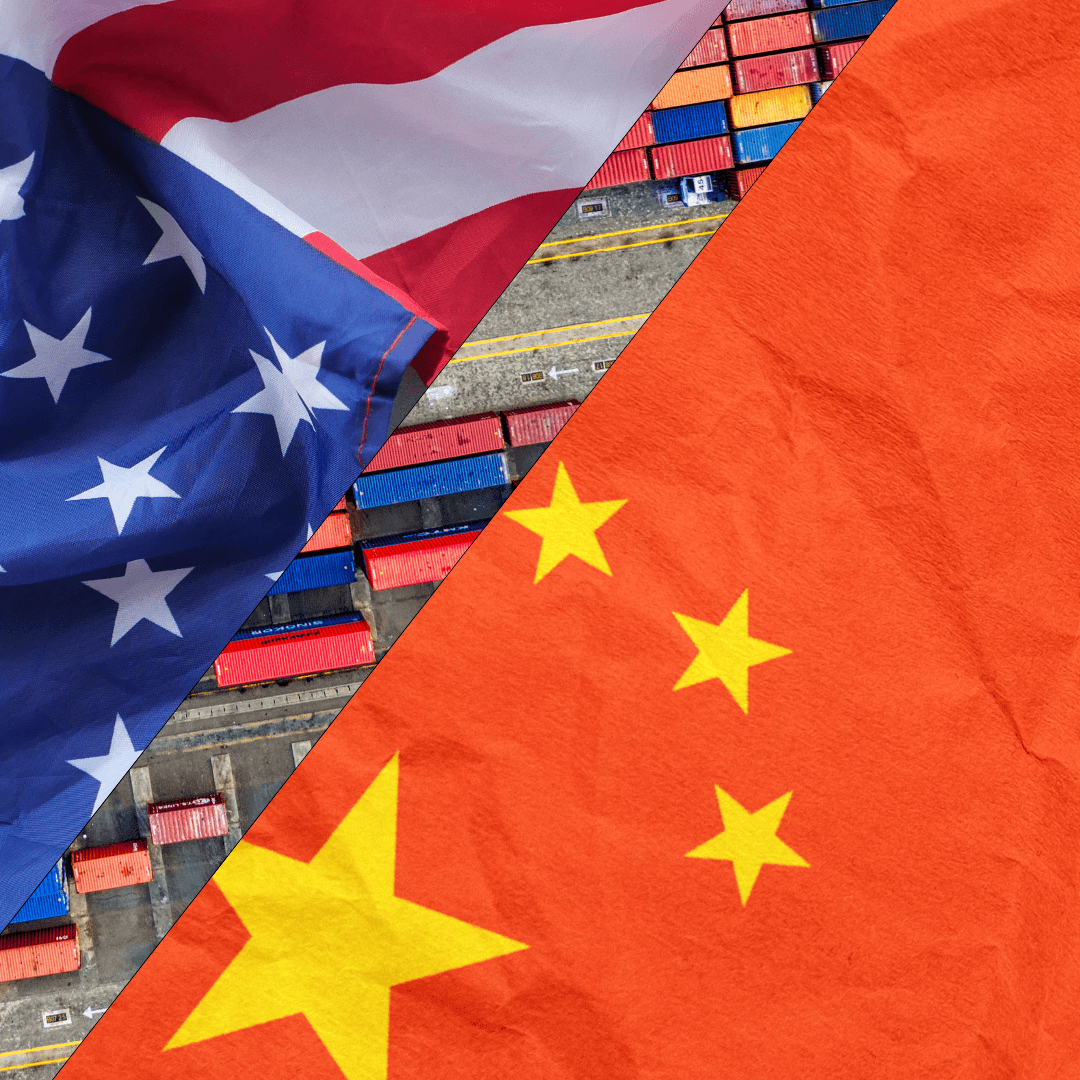China’s Export Growth Hit by US Tariff Tensions in 2025
Chinese export growth slowed to a six-month low in August 2025, rising only 4.4% year-on-year, as shipments to the US plunged around 33% amid renewed tariff tensions. Imports also weakened. While exports to Southeast Asia and the EU grew, they failed to offset the steep losses from US markets.

In August 2025, China’s export performance sharply decelerated, marking the slowest pace of growth in half a year. Exports increased just 4.4% year-on-year, down from 7.2% the previous month, and imports rose by only around 1.5%. Both numbers fell short of expectations, pointing to deeper strains in global trade dynamics.
The U.S. Factor: Tariffs and Trade Tensions
The most dramatic shift came from the United States. Chinese exports to the U.S. collapsed by nearly 33% compared with last year. Despite a temporary tariff truce earlier in the year—capping U.S. duties at 30% and Chinese retaliatory tariffs at 10%—renewed political pressure and policy uncertainty weighed heavily on trade.
The U.S. remains one of China’s largest trading partners, and a fall of this magnitude significantly undercut overall export momentum. Even though China has diversified its export destinations, the American market’s size and purchasing power are difficult to replace in the short term.
Diversification Efforts and Their Limits
Chinese exporters have responded by strengthening ties with other regions. Shipments to Southeast Asia surged by over 22%, and exports to the European Union rose by more than 10%. These gains highlight China’s ability to pivot toward regional partners and emerging markets.
However, analysts note that while these alternative markets are growing, they cannot yet fully compensate for the decline in U.S. demand. The U.S. accounted for hundreds of billions of dollars in Chinese exports annually, and the gap created by tariffs is too large for short-term diversification to close.
Trade Surplus and Domestic Constraints
Despite slower growth, China’s trade surplus in August still rose modestly to more than $102 billion. While this represents an improvement compared to the previous month, it falls short of earlier highs recorded this year.
On the domestic side, Chinese policymakers remain cautious. Unlike previous cycles of trade shocks, Beijing has not unleashed massive fiscal stimulus. Instead, support measures—such as targeted consumer incentives and small-scale industrial programs—are tightly controlled.
Key internal challenges continue to weigh on policy flexibility:
- A sluggish property sector dragging down construction and demand.
- Weak consumer spending compared with pre-pandemic levels.
- Strained local government finances, limiting infrastructure investment.
These factors mean China cannot rely solely on domestic stimulus to offset external trade shocks.
Also Read: ABB Reports Record-Breaking Q2 Order Intake, Fueled by AI Data Center Boom
Strategic Resilience and Global Value Chains
Despite tariff headwinds, China’s manufacturing sector remains deeply embedded in global supply chains. Even as finished goods exports to the U.S. decline, Chinese firms continue to supply critical components, raw materials, and intermediate products to industries worldwide.
Sectors such as semiconductors, electric vehicles, batteries, and renewable energy equipment continue to show resilience. Growing demand from Southeast Asia, India, and Latin America has provided new avenues for growth. This structural role in the global economy provides China with a degree of insulation from tariff battles.
Global Ripple Effects
The U.S. tariff regime doesn’t just affect China; it reshapes global trade patterns. With Chinese goods redirected toward Europe and Asia, inflation in some regions has eased slightly due to cheaper imports. Conversely, U.S. consumers face higher costs as tariffs inflate the prices of Chinese-made products and encourage costly reshoring or sourcing from alternative suppliers.
Moreover, new restrictions on small-value shipments have disrupted cross-border e-commerce. Popular platforms and retailers that depend on fast, low-duty shipments—such as fashion and electronics companies—are being forced to restructure logistics and pass higher costs onto consumers.
The Road Ahead
Looking forward, several challenges stand out:
- Expiration of tariff truces: If temporary agreements lapse, both sides may escalate duties.
- Export market imbalance: Growth in Southeast Asia and Europe is positive but insufficient to replace U.S. demand.
- Domestic headwinds: Weak property markets, soft consumption, and fiscal limits restrain China’s ability to counteract trade shocks.
- Global competition: Other manufacturing hubs, such as Vietnam, India, and Mexico, are capitalizing on trade tensions to capture production once destined for China.
At the same time, China’s resilience lies in its adaptability. By embedding itself deeper into supply chains, investing in advanced manufacturing, and expanding its presence in emerging markets, the country continues to find ways to buffer against tariff shocks.
Tags
You may also like

Nexus MBD Neopolis Mall Brings DinoVerse to Ludhiana: An Epic Dinosaur Adventure with Engaging Workshops
Summary
Read Full
open_in_newGet ready to travel back in time as Nexus MBD Neopolis Mall unveils the thrilling DinoVerse a spectacular dinosaur experience set to captivate visitors of all ages from 01st October to 15th November. This one-of-a-kind exhibition will bring the prehistoric era to life, featuring awe-inspiring, life-sized dinosaurs that move and roar with the help of cutting-edge animatronics.

Summary
Read Full
open_in_newSamsung is accelerating its festive-season outreach in India’s Tier-2 and Tier-3 markets, combining AI-driven products—from smartphones to home appliances—with enhanced affordability via Samsung Finance+, expanded store networks, and powerful promotions, positioning smart tech as accessible to more consumers across smaller cities.

ABB Reports Record-Breaking Q2 Order Intake, Fueled by AI Data Center Boom
Summary
Read Full
open_in_newSwiss multinational ABB posted its highest-ever quarterly order intake in Q2 2025, powered by growing global demand for AI-driven data center infrastructure. This milestone underscores accelerating tech infrastructure investments and ABB’s pivotal role in next-gen digital and industrial transformation.

Nvidia Resumes H20 AI Chip Sales to China After U.S. Approval
Summary
Read Full
open_in_newIn a significant reversal of policy, Nvidia announced it will resume sales of its H20 AI chips to China, after receiving new export licenses from the U.S. government. The decision is expected to unlock up to $10.5 billion in lost revenue for 2025, marking a critical turning point in the global AI chip race.

Nvidia Becomes First Company to Hit $4 Trillion Valuation — AI Chip Demand Rewrites History
Summary
Read Full
open_in_newNvidia has officially shattered records by becoming the first publicly traded company to reach a $4 trillion market valuation, marking a watershed moment in both tech and financial history. This milestone is fueled by unprecedented demand for its AI chips, as industries across the globe race to adopt generative AI, autonomous systems, and next-gen cloud computing.

Samsung Electronics Warns of 56% Profit Drop as U.S. AI Chip Export Curbs Hit China Sales
Summary
Read Full
open_in_newSamsung Electronics has issued a stark warning: its Q2 2025 operating profit is expected to plunge by 56% year-on-year, as U.S. export restrictions on AI chips to China ripple through the global tech landscape. This sharp decline underscores the growing vulnerability of the semiconductor sector to geopolitical tensions.

Nvidia Briefly Hits $3.92 Trillion Valuation — Poised to Become the Most Valuable Company in History
Summary
Read Full
open_in_newNvidia reached a historic milestone this week, briefly crossing a $3.92 trillion market valuation, making it a contender for the title of the most valuable company ever. This surge is fueled by insatiable global demand for its AI chips, positioning Nvidia as the undisputed leader in the artificial intelligence hardware race.


























































































































































































































































































































































